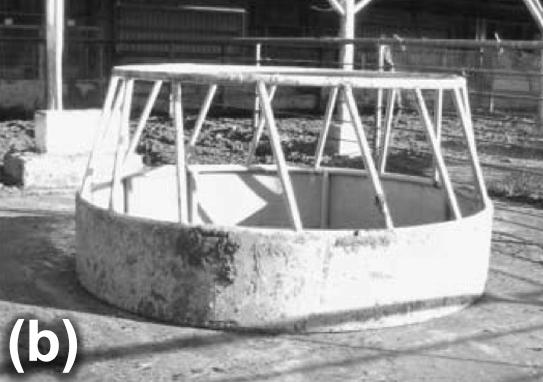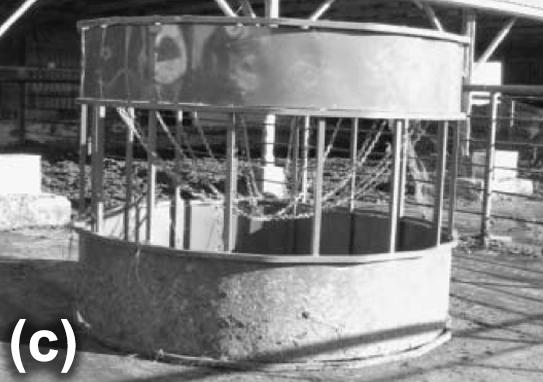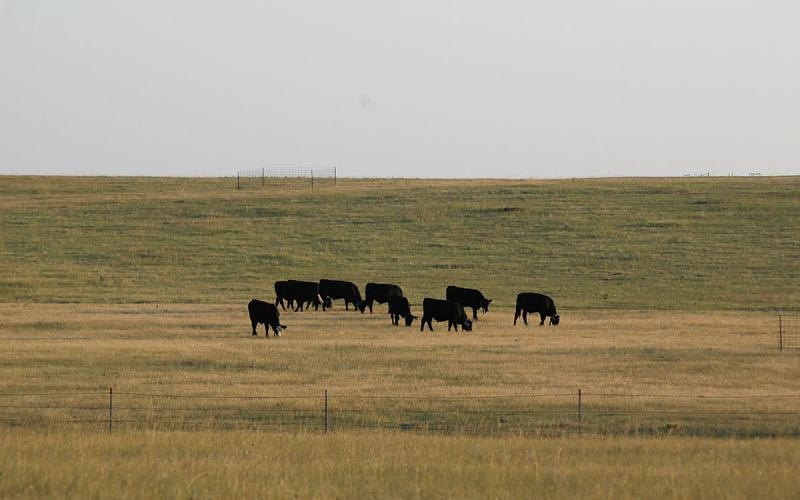Originally written by Taylor Grussing, former SDSU Extension Cow/Calf Field Specialist.
With winter setting in, pastures have headed into dormancy and corn stalk grazing is well underway. Soon it will be time to start delivering feed to the cow herd, most likely starting with hay supplied in the form of large round or square bales. Depending on which way these hay bales are delivered, the amount of waste will vary. According to USDA National Agricultural Statistics Service, over the last decade hay production has decreased 11%, while hay prices have concurrently increased 77%. Therefore, more efficient use of stored forages to decrease waste during delivery should be a priority area that can be addressed rather simply by analyzing the type of bale feeder being used.
Feeder Design & Hay Waste

Moore and Sexten (2015) analyzed the effect of bale feeder design on hay waste at the University of Missouri Agriculture Experiment Station.
The four bale feeders evaluated were: open bale feeder (Figure A), tapered bale feeder (Figure B) with sheeting on lower section and cone bale feeder with sheeting on lower and upper sections (Figure C).

Two different types of hay: alfalfa haylage bales and fescue hay bales were also utilized to evaluate interaction of bale feeders and forage. All bales were placed into bale feeders horizontally and cows utilized in the study were accustomed to bale feeders and forage types prior to study initiation.
They found that as a percent of fescue hay bales, open feeders had the greatest waste (19.2%), with tapered feeders intermediate (13.6%) and cone feeders having the least waste (8.9%).

These results agreed with previous research by other authors where cone bale feeders reduce waste with dry grass bales. However, alfalfa haylage waste was not effected by feeder design.
Overall, cone bale feeders resulted in 35% less waste than tapered bale feeders. Tapered bale feeders with lower section sheeting resulted in 29% less waste compared to open bale feeders with no lower section sheeting.
Stocking Density & Bale Size
In addition, stocking density and size of bales can also play a key role in forage waste. Greater stocking density will increase competition around bale feeders and reduce the time cows spend entering and exiting the feeder, potentially decreasing waste. Also, bale size may have been one reason there was less waste with alfalfa haylage than fescue hay. As the alfalfa haylage bales were smaller, providing cows more feeding space in bale feeders reduced the entrance/exit frequency and waste opportunities.
The Bottom Line
Cow/calf producers can prepare for winter feeding by taking a look at the type of bale feeders on hand. Do bale feeders have sheeting on the lower section? If not, can some kind of sheeting (metal or plastic) be added to help decrease waste this winter? Are enough bale feeders available for size of cowherd or do more need to be purchased?
Regardless, feeding in any type of bale feeder is better than feeding directly on the ground which greatly increases waste and thus pounds of feed required per day to meet nutritional requirements. Expenses related to wasted hay and extra pounds of hay needed to meet requirements can add up quickly. If as little as 1 lb. of waste/cow/day accumulates over a 4-month winter feeding period, this adds an extra $5 to her winter feed bill ($80/ton). And this expense will continue to increase with tapered and open bale feeders as more waste is expected, respectively. In an effort to prevent increasing the winter feed bill, a new bale feeder design or feeding plan may need to be developed and put into action in order to manage hay waste this winter.


